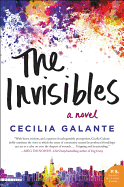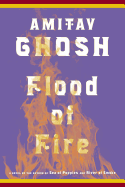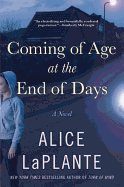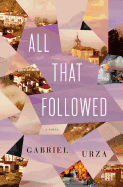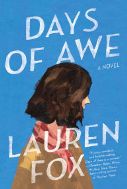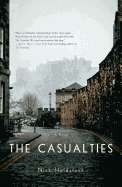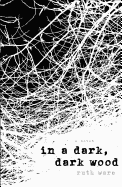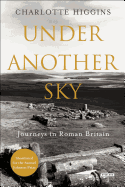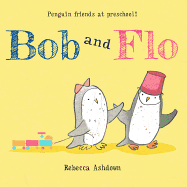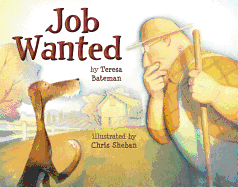 |
| photo by Kael Alford |
Anna Badkhen has written about wars on four continents, including the conflicts in Afghanistan, Iraq, Somalia and Chechnya. Her reporting has appeared in the New York Times, the New Republic, Foreign Policy and other publications. Walking with Abel (Riverhead) chronicles her journey walking ancient nomadic herding routes with the Fulani tribe of Mali.
The Fulani's ancient migration routes have traditionally been affected by adversity--drought, starvation, bandits, jihadis, rival clans and tribes. How does climate change affect them and what does it mean for their survival in the future?
The nomadic Fulani are entirely at the mercy of the weather. They may never have heard of climate change but they can describe with precision its symptoms: drier, hotter wind that blows for longer periods of time; desertification; shrinking pastures; dwindling waterholes; unpredictable rainy seasons; droughts that used to happen every decade or so and now whack the Sahel in rapid-fire succession. Like most Malians--like most people in the Global South, indeed--the nomads cannot afford to stop divining the sky for rain. They have nothing to fall back on in case animals die. There is no system of social protection for nomadic Fulani in Mali--not even as limited or broken as the one in the United States. If their animals are thirsty or hungry, they die. If the animals die, the people die. It's a very simple and terrible dependency.
And the weather in Mali is becoming hotter, drier. Meteorologists predict that it will continue getting worse. The weather, along with globalization and mass media, will be one reason why the Fulani ultimately may be forced to settle. Demographic experts forecast that within 100 years we all will be settled and living in cities.
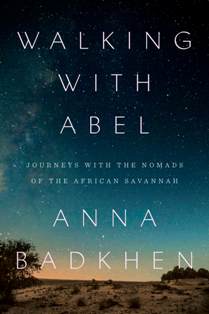 Describe the mythology of walking and the relationship the Fulani have with the cow.
Describe the mythology of walking and the relationship the Fulani have with the cow.
The 19th-century Danish philosopher Søren Kierkegaard wrote once, in a letter: "every day I walk myself into a state of well-being and walk away from every illness; I have walked myself into my best thoughts, and I know of no thought so burdensome that one cannot walk away from it [...] Thus if one just keeps on walking, everything will be all right." The 4th-century BC Greek philosopher Diogenes of Sinope promised that "it is solved by walking." It is nice to mythologize walking--to bestow upon it incredible healing qualities--but of course it is not a panacea. You cannot walk out of grief. You cannot walk out of loss.
But you can definitely walk into beauty. You can walk with your heart open and let it be filled with new knowledge, new friendships, with new ways of looking at the world. I think the Fulani--who have been walking incessantly for at least 10,000 years, following their cows on transhumance--have a different way of looking at the world because they are always on the move, mobile. They are experiencing the world at the pace of three miles an hour. My book, in part, is about what that is like.
The Fulani depend on the cow for sustenance. It is very much a working relationship. The Fulani milk the cow, drink some of the milk and barter the rest for other necessities--salt, grain, sugar, tea, matches, even money for clothes and jewelry (the Fulani are fashionistas of the bush). You will find a very similar relationship with cattle among ranchers and cowboys in the American West, the Southwest, in parts of the South. When I talk about American cowboys with Fulani herders, and when I talk about Fulani cowboys with American cattlemen in, say, southwest Texas, the degree of my interlocutors' curiosity and their attentiveness are very similar. Even the questions are similar: why do they (why do they not) neuter the bulls; why do they (why do they not) saw off cows' horns; when is the roundup; how far is the waterhole. It is my favorite conversation: the trade conversation of people who love their work, believe in it, take pride in it. It is an honor to be part of this conversation.
Death is a way of life for the Fulani. In the book, you describe discovering corpses and aged skeletons left out in the open. Many Fulani told you stories of losing children and loved ones to drought, war and starvation on their annual migrations.
One of my Fulani friends told me: "Is there a country without death?" Death is a way of life for everyone. Even if, in the United States, we have exiled death from the public eye, we still have to contend with it. We still lose our loved ones. We still mourn their loss. In the Global South, death is less sanitized than in the West--beautiful works of cultural analysis and philosophy have been written on the subject of this sanitization, most importantly by Phillippe Ariès--but it doesn't mean that it doesn't exist here. Human is the only animal that knows it will die. And we are missing it--our hundreds of thousands of years of evolutionary development is making us miss the presence of death. So in its stead, as Eliot Weinberger points out astutely, we look for surrogate death: violent death on TV screens, online death, pretend death--the more violent, the better.
I think it may have to do with the irrational--but highly merchandised--obsession the West has with happiness. The oppressive, obsessive insistence that we must be happy! happy! happy! all the time. The business made of selling happiness to consumers. It doesn't work, of course, which is why the business is doing well--if you're not happy, it means you're not buying enough happy-making products or services. The truth is, our loved ones die. And, simply put, it is very sad. We in the West are in the process of a worrisome and dangerous unlearning to be sad.
You seem to have a connection to travel and the wandering life, both as an author and journalist and in your own Jewish lineage.
Being an outsider--a visitor, a transient--is a convenient excuse for being a storyteller. Being a storyteller is a convenient excuse for being an outsider.
You previously wrote from the war zones of Iraq, Afghanistan and Chechnya. Mali has had a long history of conflict, but not like those countries' large, industrial scale wars. How was writing Walking with Abel different? This book feels very personal.
It was a little intimidating in the beginning to commit to a long-term project not in a war zone. Of course, I was fewer than 100 miles away from one--that's how close a separatist war-turned-Islamist jihad is raging from where my hosts and I lived and walked. But the war was barely a factor in their lives, and so it barely is a factor in my book. I learned, from writing this book, that the flashy and horrible drama of war is not what makes good storytelling. What makes good storytelling is attentiveness, respect, dedication and a lot of very hard work. --Jarret Middleton
Anna Badkhen: Storyteller as Outsider





 Describe the mythology of walking and the relationship the Fulani have with the cow.
Describe the mythology of walking and the relationship the Fulani have with the cow.